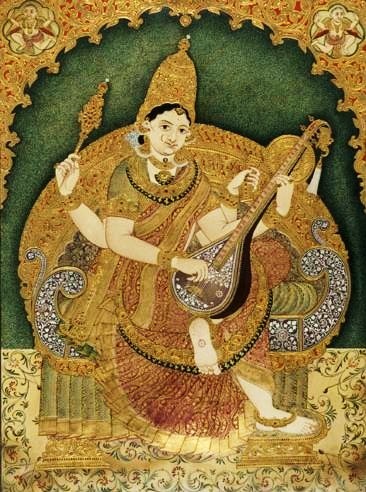|
Pattupurakkavu Bhagavathi Temple
Thonnallur Pattupurakkavu Bhagavathi temple () is a famous Hindu temple at Pandalam, India. It is located one kilometre to the north of Pandalam junction, by the Thiruvananthapuram - Angamaly MC Road. The temple hosted the first ever Devi Bhagavatha Sathram in Kerala, from 28 April – 7 May 2010. The main deity of the temple is Bhadrakali. The temple also has shrines of other deities such as Ganapathi, Shiva, Udayan, Brahmarakshas, Yakshi, Nāga, Subrahmanyan, Navagraha and Anamarutha. The temple complex also includes an ''Anakkottil'' (platform for elephants during the rite ''Seva''), a holy pond, office room, and a few banyan trees. The temple has arrangements for Hindu wedding, including a feast hall and changing rooms. It also has a stage to conduct cultural events. The temple has a ''Navratri mandapam'' annexe situated near Pandalam central junction. The deity in the annexed temple is Saraswati, the goddess of knowledge, music, and the arts. Location This temple is locat ... [...More Info...] [...Related Items...] OR: [Wikipedia] [Google] [Baidu] |
Pandalam
Pandalam is a municipality in Pathanamthitta district Kerala, India. Pandalam is known for its connection with Ayyappan and Sabarimala. It recognised ''as the cultural capital of Travancore'', Pandalam hosts educational institutions ranging from reputed schools to post graduate, training, Ayurveda, and engineering colleges. There are seven colleges and 23 schools at Pandalam, including N. S. S. College, Pandalam. The Kerala state government plans to make the place a special Township, by including the Pandalam municipality and Kulanada panchayat. The neighborhoods of Pandalam town include Thumpamon, Pandalam Thekkekara, Kulanada, Nooranad, Padanilam, Venmony Trade and Commerce The centuries-old ''Kurunthottayam'' market (now known as the Pandalam market) was one among the largest agricultural markets in central Travancore. Kerala's widest suspension bridge was constructed in Pandalam over the Achankovil river. The bridge is 70 metres long and 2.5 metres wide. T ... [...More Info...] [...Related Items...] OR: [Wikipedia] [Google] [Baidu] |
Nāga
In various Asian religious traditions, the Nāgas () are a divine, or semi-divine, race of half-human, half-serpent beings that reside in the netherworld (Patala), and can occasionally take human or part-human form, or are so depicted in art. Furthermore, nāgas are also known as Dragon, dragons and Water spirit, water spirits. A female nāga is called a Nagin, or a Naiṇī Devī, Nagini. According to legend, they are the children of the sage Kashyapa and Kadru. Rituals devoted to these supernatural beings have been taking place throughout South Asia for at least 2,000 years. They are principally depicted in three forms: as entirely human with snakes on the heads and necks, as common serpents, or as half-human, half-snake beings in Hinduism and Buddhism. ''Nagaraja'' is the title given to the king of the nāgas. Narratives of these beings hold cultural significance in the mythological traditions of many South Asian and Southeast Asian cultures, and within Hinduism and Buddhism ... [...More Info...] [...Related Items...] OR: [Wikipedia] [Google] [Baidu] |
Hindu Epic
Mahākāvya (lit. great kāvya, court epic), also known as ''sargabandha'', is a genre of Indian epic poetry in Classical Sanskrit. The genre is characterised by ornate and elaborate descriptions of phenomena such as scenery, love, and battles. Typical examples of ''mahākāvya'' are the ''Kumarasambhava'' and the '' Kiratarjuniya.'' The genre evolved from earlier epics, the Mahabharata and the Ramayana. Despite the length of ''mahākāvya''s (15-30 cantos, a total of about 1500-3000 verses), they are still much shorter than the Ramayana (500 cantos, 24000 verses) and the Mahabharata (about 100000 verses). Classical examples The Buddhist poet and philosopher Aśvaghoṣa (c. 80 – c. 150 CE) is one of the earliest Sanskrit poets with surviving Kāvya literature. His '' Buddhacarita'' (''Acts of the Buddha'') calls itself a ''mahākāvya'' and was influential enough to be translated into both Tibetan and Chinese. Another kāvya by Aśvaghoṣa is the ''Saundarananda'', w ... [...More Info...] [...Related Items...] OR: [Wikipedia] [Google] [Baidu] |
Puja (Hinduism)
() is a worship ritual performed by Hindus to offer devotional homage and prayer to one or more deities, to host and honour a guest, or to spiritually celebrate an event. It may honour or celebrate the presence of special guests, or their memories after they die. The word ''puja'' is roughly translated into English as 'reverence, honour, homage, adoration, or worship'.पूजा ''Sanskrit Dictionary'', Germany (2009) ''Puja'' (পুজো / পুজা in Bengali language, Bangla), the loving offering of light, flowers, and water or food to the divine, is the essential ritual of Hinduism. For the worshipper, the divine is visible in the image, and the divinity sees the worshipper. The interaction between human and deity, between human and guru, is called a ''Darshan (Indian re ... [...More Info...] [...Related Items...] OR: [Wikipedia] [Google] [Baidu] |
Meenam
The Malayalam Calendar, or the Kollam Era (), is a sidereal solar calendar used in Kerala. The origin of the calendar has been dated to 825 CE, commemorating the establishment of Kollam. There are many theories regarding the origin of the era, but according to recent scholarship, it commemorated the foundation of Kollam by Maruwan Sapir Iso, who was the leader of Persian Christian Settlers and trading guilds like Anjuvannam following the liberation of the Kingdom of Venad from the Chola rule by or with the assistance of the Chera emperor at Kodungallur. The Quilon Syrian copper plates were grants and privileges given to the trading guilds involved in the establishment of Kollam by Sthanu Ravi Varma. Kollam was the capital of Venadu and an important port town of the Chera Kingdom in that period. Kollam Aandu was adapted in the entire Chera Kingdom (the contemporary states of Tamil Nadu, Karnataka, and Kerala), the majority of which is now in Kerala. In Malayalam-speaking ... [...More Info...] [...Related Items...] OR: [Wikipedia] [Google] [Baidu] |
Coordinate System
In geometry, a coordinate system is a system that uses one or more numbers, or coordinates, to uniquely determine and standardize the position of the points or other geometric elements on a manifold such as Euclidean space. The coordinates are not interchangeable; they are commonly distinguished by their position in an ordered tuple, or by a label, such as in "the ''x''-coordinate". The coordinates are taken to be real numbers in elementary mathematics, but may be complex numbers or elements of a more abstract system such as a commutative ring. The use of a coordinate system allows problems in geometry to be translated into problems about numbers and ''vice versa''; this is the basis of analytic geometry. Common coordinate systems Number line The simplest example of a coordinate system is the identification of points on a line with real numbers using the '' number line''. In this system, an arbitrary point ''O'' (the ''origin'') is chosen on a given line. The coordinate o ... [...More Info...] [...Related Items...] OR: [Wikipedia] [Google] [Baidu] |
Saraswati
Saraswati (, ), also spelled as Sarasvati, is one of the principal Devi, goddesses in Hinduism, revered as the goddess of knowledge, education, learning, arts, speech, poetry, music, purification, language and culture. Together with the goddesses Lakshmi and Parvati, she forms the trinity of chief goddesses, known as the Tridevi. Sarasvati is a pan-Indian deity, venerated not only in Hinduism but also in Jainism and Buddhism.Ludvik (2007), pp. 1, 11. She is one of the prominent goddesses in the Historical Vedic religion, Vedic tradition (1500 to 500 BCE) who retains her significance in later Hinduism. In the Vedas, her characteristics and attributes are closely connected with the Sarasvati River, making her one of the earliest examples of a Rivers in Hinduism, river goddess in Indian tradition. As a deity associated with a river, Sarasvati is revered for her dual abilities to purify and to nurture fertility. In later Vedic literature, particularly the Brahmanas, Sarasvati is i ... [...More Info...] [...Related Items...] OR: [Wikipedia] [Google] [Baidu] |
Navratri
Navaratri () is an annual Hindu festival observed in honor of the goddess Durga, an aspect of Adi Parashakti, the supreme goddess. It spans over nine nights, first in the month of Chaitra (March/April of the Gregorian calendar), and again in the month of Ashvin (September–October). It is observed for different reasons and celebrated differently in various parts of the Hindu Indian cultural sphere. Theoretically, there are four seasonal ''Navaratris''. However, in practice, it is the post-monsoon autumn festival called Sharada Navaratri. There are 2 Gupta Navaratris or "Secret Navaratris" as well, one starting on the Shukla Paksha Pratipada of the Magha Month (Magha Gupta Navaratri) and another starting in the Shukla Paksha Pratipada of Ashadha Month. Etymology and nomenclature The word ''Navarātram'' means "a period of nine nights" in Sanskrit, ''nava'' meaning "nine" and ''ratri'' meaning "night". Dates and celebrations In the eastern and northeastern states of ... [...More Info...] [...Related Items...] OR: [Wikipedia] [Google] [Baidu] |
Change Room
A changing room, locker room (usually in a sports, theater, or staff context), or changeroom (regional use) is a room or area designated for changing one's clothes. Changing-rooms are provided in a semi-public situation to enable people to change clothes with varying degrees of privacy. A fitting room, or dressing room, is a room where people try on clothes, such as in a department store. Separate changing rooms may be provided for men and women, or there may be a non-gender-specific open space with individual cubicles or stalls, as with unisex public toilets. Many changing rooms include toilets, sinks and showers. Sometimes a changing room exists as a small portion of a restroom/washroom. For example, the men's and women's washrooms in Toronto's Yonge–Dundas Square (which includes a water play area) each include a change area which is a blank counter space at the end of a row of sinks. In this case, the facility is primarily a washroom, and its use as a changing room is ... [...More Info...] [...Related Items...] OR: [Wikipedia] [Google] [Baidu] |
Dining Hall
A cafeteria, called canteen outside the U.S., is a type of food service location in which there is little or no waiting staff table service, whether in a restaurant or within an institution such as a large office building or school; a school dining location is also referred to as a dining hall or lunchroom (in American English). Cafeterias are different from coffeehouses, although the English term came from the Spanish term ''cafetería'', which carries the same meaning. Instead of table service, there are food-serving counters/stalls or booths, either in a line or allowing arbitrary walking paths. Customers take the food that they desire as they walk along, placing it on a tray. In addition, there are often stations where customers order food, particularly items such as hamburgers or tacos which must be served hot and can be immediately prepared with little waiting. Alternatively, the patron is given a number and the item is brought to their table. For some food items an ... [...More Info...] [...Related Items...] OR: [Wikipedia] [Google] [Baidu] |
Hindu Wedding
A Hindu wedding, also known as (, ) in Hindi, () in Marathi, () in Bhojpuri, () in Bengali, () or () in Odia, () in Tamil, () in Telugu, () in Kannada, and ''kalyanam'' (, ; ) in Malayalam and other languages, is the traditional marriage ceremony for Hindus. The weddings are very colourful, and celebrations may extend for several days and usually a large number of people attend the wedding functions. The bride's and groom's homes—entrance, doors, walls, floor, roof—are sometimes decorated with colors, flowers, lights and other decorations.Yee, A. (2008 May 17Sari nights and henna parties ''The Financial Times''. The word ''vivāha'' originated as a sacred union of two people as per Vedic traditions, i.e. what many call marriage, but based on cosmic laws and advanced ancient practices. Under Vedic Hindu traditions, marriage is viewed as one of the saṁskāras performed during the life of a human being, which are lifelong commitments of one wife and one hu ... [...More Info...] [...Related Items...] OR: [Wikipedia] [Google] [Baidu] |
Banyan Tree
A banyan, also spelled banian ( ), is a Ficus, fig that develops accessory trunks from Aerial root#"Stranglers" (prop-root), adjacent prop roots, allowing the tree to spread outwards indefinitely. This distinguishes banyans from other trees with a Strangler Fig, strangler habit that begin life as an epiphyte, i.e. a plant that grows on another plant, when its seed germinates in a crack or crevice of a host tree or edifice. "Banyan" often specifically denotes ''Ficus benghalensis'' (the "Indian banyan"), which is the national tree of India, though the name has also been generalized to denominate all figs that share a common life cycle and used systematics, systematically in Taxonomy (biology), taxonomy to denominate the subgenus ''Ficus#Subgenus Urostigma, Urostigma''. Characteristics Like other fig species, banyans also bear their fruit in the form of a structure called a "syconium". The syconium of ''Ficus'' species supply shelter and food for fig wasps and the trees depen ... [...More Info...] [...Related Items...] OR: [Wikipedia] [Google] [Baidu] |







